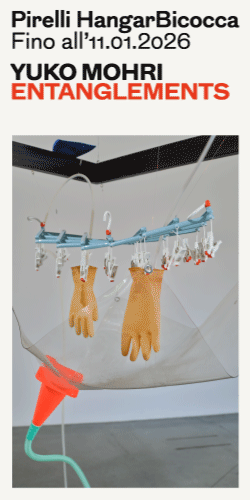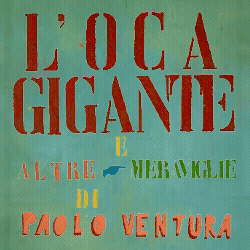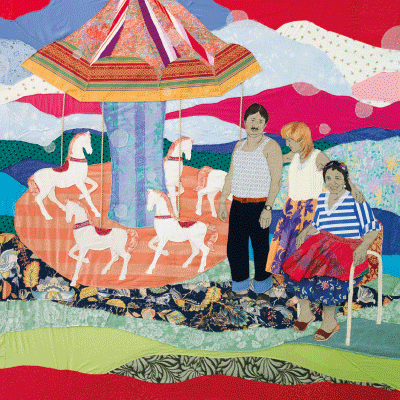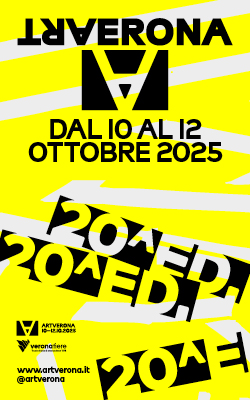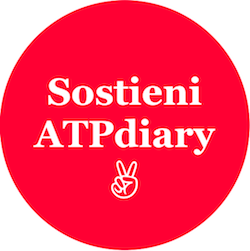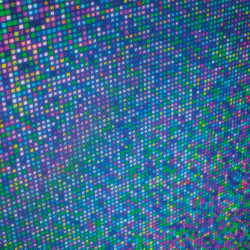[nemus_slider id=”57471″]
Segue il testo in italiano —
Space 4235 is hosting the last project by Danish artist Henrik Plenge Jakobsen. In the space it is to see a digital projection of an excerpt of the movie LITTORINA LITTOREA, accompanied by an original poster conceived by the artist for 4235.
Here some questions to the artist.
ATP: How come are you interested in disciplines that lie outside art, like zoology, hydrology and geology?
Henrik Plenge Jakobsen: Actually I wanted to study biology, hydrology or ecology when I was a kid, but since it kind of went wrong at high school and I had to drop out of that, I became more obsessed with art instead. However it has remained as a one of my main interest ever since, and one could say that I find some of the answers related to our existence in these fields. Littorina Littorea was an adventure that could combine my interest in hydrology and geology as well as art and a medium that was new to me, and an excuse to go to some of these locations in the Baltic Sea with a specific purpose.
ATP: The film Littorina Littore is made up of six shorts. Is there a precise reason why you divided it in six parts?
HPJ: The reason is for six films is that I had six different actions related to the coastline in mind, so more six singular portraits of a particular location where a gentle and fragmented human interaction with the landscape would take place.
ATP: The six short films follow one unique narration or do they illustrate six different stories?
HPJ: Some of the films are interrelated; the film shown at Space4235 in Genova is using the same actress in another film filmed at the beach in front of Ingmar Bergman’s house at Hammers at Fårö some 100 kilometers away. I see the film in shown Genova as a kind of later sequence in this personas life if you want. Otherwise it is solitary characters, on their own facing the sea and rock formations and sparse vegetation. Alone, confronted with their own existence, and that’s why there is no story as such, since a story somehow disturb this existential tone I wanted to transmit.
ATP: Would you like to tell me why you decided to set Littorina Littorea in the Baltic Sea islands?
HPJ: The entire project somehow started on Facebook, when a friend, Stine Hebert, posted that she would have a vacant apartment during the summer in Visby, the “capital” of the island Gotland. I went there with my family, and I was so inspired and fascinated by the character of the landscape and in particular the coastline, that I knew I had to come back and make a piece about it, and that it had be a celluloid piece, which is not really my normal media, since I am more of a 3 D artist. Prior to that visit I had paid a lot of visits the Danish island Bornholm situated also in the Baltic sea between Sweden and Poland and my intuition told me that these two places had a common soul so to say, despite that Bornholm is very old granite rock, and Gotland has rocks made out of fossils that stems from remote coral reef once located in the tropical part of the globe. So it started, and the luck was that the friend Stine Hebert was also working at that time at the Baltic Art Centre in Visby, so she arranged that I could come back and work on these films within the context of the Baltic Art centre.
ATP: What does attract you of this place?
HPJ: The Baltic sea and its islands has had a lifelong appeal to me, both be its where I come from, though I come from the end of the Baltic sea since it kind of stops and a geographic nomination around Copenhagen where I am born. Additionally be its history, both when it comes to its natural history and the history linked to human societies, and as such as an area it has had it ups and downs. The Baltic Sea is currently having one of its downs, the overall ecologic state is very bad, and also many of the islands being depopulated and the shrinking economy is now mainly based on tourism. However its land and seascape is very appealing, the greenish brackish water, the somehow difficult life conditions, for humans and nature
ATP: Are there particular films, or other sources, where you drawn inspiration from?
HPJ: Littorina Littorea is inspired by films in particular; the TV series Pippi Longstocking which was recorded mainly on Gotland, maybe some of the best films ever made for children, but also art filmmakers such as Maya Deren, Derek Jarman or Susanne Winterling and more conventional filmmakers such as a Andrej Tarkovsky and Lars Von Trier, which cinematographer, Manuel Claro shot four out of the six films, and of course not to forget Ingmar Bergman, especially the movie The Seventh Seal, from 1957.
ATP: The movie is closely linked to your life. I am thinking of your friends who appear as main characters (non professional) in Littorina Littorea. Is there a particular reason why you did involve them in your project?
HPJ: I almost always use people that I know in my projects and so it was also for these films. It seems like the most natural to me make a cast from people that I have confidence in, and that know in one way or another. Since I mostly know artist, most of my characters are artist, and in this case it’s only my hairdresser Joekim Davie Lenny Nielsen who is not a visual artist, though he is somewhat a wizard when it comes to hair. But of course it also has an element of exploitation, which is always at stake when one is making films, but first and foremost I see it also a tribute to these friends and celebration of the concept of art and life.
ATP: For the exhibition at Space4235, in the presentation text, Marianne Torp describes the material properties of the celluloid film of your movie. Why did you choose to turn in 16mm film?
HPJ: I wanted to do something with a slightly ghostly attitude, so the 16 mm in black and white projected has this kind of otherworldly atmosphere to it. Furthermore I also wanted to work with an analogue process, since I am a bit exhausted after my 30 year long working relationship with the computer. So everything was done via analogue processes and by hand, also the editing and maybe the first underwater scene with a 16 mm camera for many years. It’s not the last time, if the16 mm technology remains available, despite it’s so much more complicated and involves some issues of nostalgia, but I think the ethereal qualities one get with this medium overrules these problems.

Intervista con Henrik Plenge Jakobsen
Lo Space 4235 ospita l’ultimo progetto dell’artista danese Henrik Plenge Jakobsen. Nello spazio è proiettato un estratto del film LITTORINA LITTOREA, in formato digitale, accompagnato da un poster originale concepito dall’artista per 4235.
Seguono alcune domande all’artista.
ATP: Perché ti interessi a discipline non artistiche, come la zoologia, l’idrologia e la geologia?
Henrik Plenge Jakobsen: Quando ero piccolo avrei voluto studiare biologia, idrologia o ecologia, ma quando al liceo mi è andata male e mi sono dovuto ritirare sono diventato ossessionato dall’arte. Però è rimasto uno dei miei interessi più forti da allora, e direi che si possono trovare alcune risposte alle domande sull’esistenza in questi campi. Littorina Littorea è stata un’avventura che poteva combinare il mio interesse nell’idrologia e nella geologia con l’arte, e un medium che per me era nuovo, e una scusa per raggiungere le locations sul Mar Baltico con uno scopo preciso.
ATP: Il film Littorina Littorea è composto da sei cortometraggi. C’è una ragione per la quale l’hai suddiviso in sei parti?
HPJ: La ragione per i sei film è che avevo in mente sei differenti azioni legate al mare, sei singoli ritratti di una particolare location dove una delicata e frammentaria interazione umana con il paesaggio potesse realizzarsi.
ATP: I sei film seguono un’unica narrazione o illustrano sei storie differenti?
HPJ: Alcuni degli episodi sono legati tra loro; il film esposto a Space4235 a Genova usa la stessa attrice di un altro film, girato sulla spiaggia di fronte alla casa di Ingmar Bergman a Hammer, che dista circa 100 km da Fårö. Per me, se vogliamo, il film a Genova è un po’ come una sequenza successiva nella vita di questa persona. Diversamente sono personaggi solitari, soli nell’affrontare il mare e le rocce e la vegetazione scarna. Soli, a confronto con la loro stessa esistenza, ed è per questo che non c’è una vera narrazione, perché una storia avrebbe disturbato questo tono esistenzialista che volevo trasmettere.
ATP: Come mai hai deciso di ambientare Littorina Littorea sulle isole del Mar Baltico?
HPJ: L’intero progetto è nato, in qualche modo, su Facebook, quando un’amica, Stine Hebert, ha postato uno stato dicendo che avrebbe avuto un appartamento a disposizione durante l’estate a Visby, la “capitale” dell’isola Gotland. Ci sono andato con la mia famiglia, e sono stato così affascinato e ispirato dal carattere del paesaggio e in particolare dalla costa, che ho capito che sarei dovuto tornare e realizzare un’opera su questo, e sarebbe dovuto essere un lavoro su celluloide, che non è in effetti uno dei miei media “normali”, dato che sono per lo più un artista che usa il 3D. Prima di questa visita poi avevo già visitato più volte l’isola danese di Bornholm situata nel Mar Baltico tra la Svezia e la Polonia e il mio intuito mi disse che questi luoghi avevano come un’anima comune, nonostante Bornholm sia una roccia granitica molto antica e Gotland sia invece fatta di rocce piene di fossili che provengono dalla remota barriera corallina che una volta si trovava nella parte tropicale del globo. Così è cominciata, e la fortuna ha voluto che la mia amica Stine Hebert stesse lavorando al Bartic Art Centre di Visby in quel periodo, così ha organizzato per me di modo che potessi tornare e lavorare su questi film nel contesto del Baltic Art Centre.
ATP: Che cosa ti attrae di questo luogo?
HPJ: Il Mar Baltico e le sue isole hanno avuto un’attrazione lunga una vita per me, sia perché è da dove provengo, anche se io vengo dalla “fine” del Mar Baltico, dato che questo “finisce” dove inizia Copenhagen, dove sono nato. Inoltre sono attratto dalla sua storia, sia quella naturalistica che quella legata alle società umane, e anche come area in sé, che ha avuto i suoi trascorsi. Il Mar Baltico al momento sta avendo uno dei suoi momenti no, il suo stato ecologico è molto negativo, molte delle isole si stanno spopolando e l’economia, in recessione, ore è basata principalmente sul turismo. In ogni caso il territorio è molto attraente, sia di terra che di mare, l’acqua salmastra verde, le condizioni di vita in qualche modo difficili, per gli umani e la natura.
ATP: Ci sono film in particolare, o altre fonti, da cui trai ispirazione?
HPJ: Littorina Littorea è ispirata ad alcuni film particolari; la serie TV Pippi Calzelunghe che è stata girata in gran parte a Gotland, forse uno dei migliori film per bambini mai creati, ma anche film d’arte come quelli dei filmmaker Maya Deren, Derek Jarman e Susanne Winterling e registi più tradizionali some Andrej Tarkovsky e Lars Von Trier, il cui direttore della fotografia, Manuel Claro, ha diretto quattro dei miei sei film, e naturalmente non dimentichiamo Ingmar Bergman, in particolare il film Il Settimo Sigillo, del 1957.
ATP: Il film è molto legato alla tua vita. Penso ai tuoi amici che appaiono come protagonisti (tra I non professionisti) in Littorina Littorea. C’è una ragione particolare per cui li hai coinvolti nel progetto?
HPJ: Uso sempre persone che conosco nei miei progetti, e così è stato per questo film. MI sembra la cosa più naturale da fare, scegliere persone in cui ho fiducia e che conosco, in un modo o nell’altro. Siccome conosco soprattutto artisti, molti dei miei personaggi sono artisti, e in questo caso specifico c’è soltanto il mio parrucchiere Joekim Davie Lenny Nielsen che non è un artista visivo, nonostante sia una specie di mago quando si tratta di capelli. Ma si tratta anche di un elemento di sfruttamento, che è sempre presente quando si gira un film, ma in primis lo vedo come un tributo a questi amici e una celebrazione del concetto di arte e di vita.
ATP: Per la mostra a Space 4235, nel testo introduttivo, Marianne Torp descrive le proprietà materiali della celluloide del tuo film. Come mai hai deciso di girare in 16mm?
HPJ: Volevo fare qualcosa che avesse un leggero effetto fantasmatico, e il 16mm proiettato in bianco e nero ha in sé questo tipo di atmosfera di un altro mondo. In più volevo lavorare con un processo analogico, dato che sono un po’ esausto dopo una relazione di lavoro con il computer durata 30 anni. Quindi tutto è stato fatto in analogico e a mano, anche il montaggio e forse la prima scena subacquea con una telecamera 16mm da molti anni a questa parte. Non sarà l’ultima volta; se la tecnologia 16mm resterà disponibile, anche se è così tanto più complicata e ha in sé un effetto nostalgico, ma credo che le qualità eteree che si ottengono con questo medium cancellino questi problemi.
Traduzione dall’inglese di Martina Odorici —


The Danish artist Henrik Plenge Jakobsen has created a film installation, Littorina Littorea, that comprises six short films. These were shot on islands in the Baltic Sea, specifically on Bornholm and on Färö and Lille Karlsø near Gotland. The ragged coastal landscapes with their many cliffs form the backdrop for mysterious scenes that show people carrying out enigmatic actions that appear to be ritual in nature or to refer to some unknown mythological realm. A woman is placing triangular mirrors in a dark landscape, a man is walking along with a long cane upon which eggs appear to be growing. A negative version of this egg cane appears on the bottom of the sea in one of the other films. A man touches a damp cliff side while another pours salt into the sea kneeling on a stony beach.
Littorina littorea is the name of a sea snail that was named by the Swedish botanist and zoologist Carl von Linné in the 18th century after an expedition to Gotland. The snail has lived in the area for countless ages and lent its name to an earlier stage of the Baltic, specifically the Littorina Sea, where, millennia before our time, the water level was much higher than it is today. The snail has been found in deposits in the geological intermediate zone that was then covered by the brackish waters of the Littorina sea, but which are now the coastlines of the Baltic. These landscapes, once submerged under the waters, evoke a world that predates civilisation, on the edge of history.
The Baltic constitutes an intermediate stage somewhere between lake and sea and as such displays unusual variations in salinity. The Baltic has been an important trade route and was much travelled in the Viking and Medieval ages when the area was both rich and powerful. The films take place on locations that are of biological, mythological, or historical significance for the Baltic. All the various tracks laid down provide a kind of sounding board for the films even though Plenge Jakobsen has no intention of pointing out a hidden connection or of reaching a single conclusive insight. Rather, the work reflects his own interests. He is interested in the Baltic, in zoology, hydrology, and geology, and in the friends and colleagues that appear in his film. In this way the films constitute a scene or setting for his own intuitive preferences.
The people appearing in the films are not professional actors; rather, they are personal friends and acquaintances of Plenge Jakobsen who, by virtue of their own personalities and distinctive characteristics, contribute characters whose actions lift them out of our recognisable universe, leaving them on the edge of the fathomable where they become phantoms of themselves.
The footage was shot on 16mm film and cut in an analogue process. The material properties of the celluloid film as it loops in the projector and projects its grainy image up onto the wall give the films a special tactility. Projected onto grey walls the films also seem to almost dissolve, causing the projections to appear like a kind of vision – much like the flickering figures they portray. The films’ actions and objects point back to Plenge Jakobsen’s other body of work, in which the combination of performance and sculptural objects is a pivotal element. This is intermingled with references to film and art history with Northern European landscapes, Land Art, and early experimental films as obvious sources of inspiration.
Text by Marianne Torp
